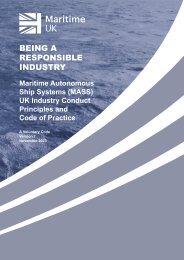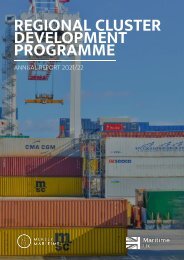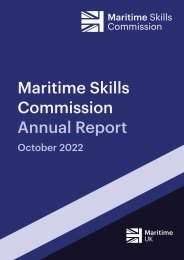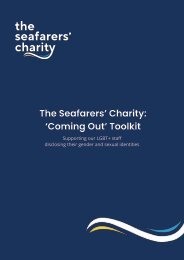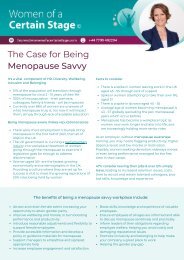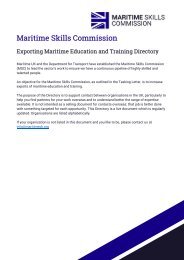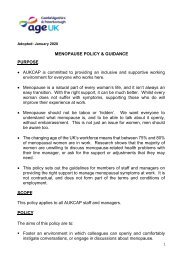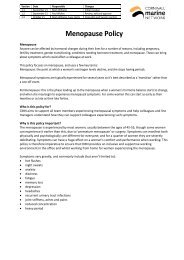code_of_practice_V3_2019
Create successful ePaper yourself
Turn your PDF publications into a flip-book with our unique Google optimized e-Paper software.
16 Carriage and Transfer <strong>of</strong> Cargo<br />
(including Dangerous Goods)<br />
16.1 OBJECTIVE<br />
The carriage and transfer <strong>of</strong> cargoes under MASS operations should be conducted in an acceptable<br />
safe manner to maintain all practical equivalence to the prescribed regulations for conventional<br />
shipping. This Chapter <strong>of</strong> the CoP <strong>of</strong>fers guidance to MASS Owners and Operators in the interpretation<br />
<strong>of</strong> their ‘Duty <strong>of</strong> Care’ to be considered in conjunction with the MASS Definitions, Operations and<br />
Certification within this Code.<br />
16.2 SCOPE<br />
16.2.1 The carriage and transfer <strong>of</strong> cargo (including dangerous goods) by sea is controlled in order to prevent injury to<br />
persons or damage to ships and their cargoes and to prevent pollution <strong>of</strong> the marine environment under normal<br />
operating conditions. Dangerous goods are cargoes classified in the International Maritime Dangerous Goods<br />
(IMDG) Code which is given force <strong>of</strong> law through the Merchant Shipping (Dangerous Goods and Marine<br />
Pollutants) Regulations 1997 (SI 1997 No. 2367), as amended and applies to all vessels irrespective <strong>of</strong> size in<br />
UK (navigable) waters. MASS operations will be dictated by the operational requirements <strong>of</strong> the MASS and<br />
carriage <strong>of</strong> all cargoes should be subject to a risk based safety assessment.<br />
16.2.2 This Chapter is divided into the following sub-sections:<br />
n Cargo demarcation;<br />
n Ships stores;<br />
n Construction and certification requirements;<br />
n Operational considerations including emergency and spillage provisions;<br />
n Transfer arrangements <strong>of</strong> Marine Gas Oil (MGO) and equivalents from designated tanks;<br />
n Transfer arrangements from portable tanks (greater than 450 litres) or intermediate bulk containers (IRCC);<br />
n Transfer arrangements for receptacles less than 200 litres;<br />
n Dangerous Goods Classes (listing).<br />
16.2.3 Control <strong>of</strong> dangerous goods is intended to cover all dangerous goods carried as cargo on any vessel. This includes<br />
any specialist equipment which may be classified as dangerous cargo when carried by crew or workers in the<br />
event <strong>of</strong> partial manned operations.<br />
16.2.4 When carrying dangerous goods identified in the IMDG Code, the vessel, including MASS, is required to have a<br />
Document <strong>of</strong> Compliance for the Carriage <strong>of</strong> Dangerous Goods issued by the Administration regardless <strong>of</strong> the<br />
quantities being shipped and held by the ‘Operating’ authority for all MASS operations.<br />
16.2.5 Dangerous goods may only be carried at the same time as personnel on MASS holding a Document <strong>of</strong><br />
Compliance only where such workers or industrial personnel are carried on the express business <strong>of</strong> the MASS<br />
in the event <strong>of</strong> partial manned operations.<br />
92<br />
MASS UK Industry Conduct Principles and Code <strong>of</strong> Practice Version 3




